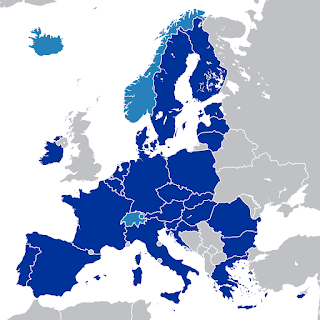Is the decision in Keck (C-267/91) now merely a distraction in analysing the Court of Justice’s approach to the single market?
One of the aims of the EU, as set out in the Treaty of Lisbon, is the establishment of an economic union. To achieve this, fostering a single market for goods and services has been a priority of the EU. Thus, it is inevitable that the decision in Keck, which gave greater autonomy to Member States (MS) in the regulation of trade, has now been discarded. The approach by the CJEU for goods is now one of market access, explained in Trailers and the Unfair Commercial Practices Directive 2005/29 (UCPD). For services, Keck never applied, the CJEU has taken the ‘restrictions’ approach in Säger. However, although this significantly reduces the application of Keck, the ruling can perhaps assist our understanding of the market access approach, thus cannot be said to be merely a distraction.
Decision in Keck and impact
Article 34-35 TFEU prohibit quantitative restrictions (QRs) and measures of equivalent effect (MEEs) on the movement of goods across borders to facilitate the single market. Prior to Keck, this has been broadly interpreted in Dassonville, where measures capable of directly or indirectly hindering intra-community trade were found to be MEEs. Cassis de Dijon further defined MEEs as indistinctly applicable measures with different effects on imports and domestic goods. However, Keck challenged this analysis under the ‘paragraph 16 proviso’, where it was held that ‘measures restricting or prohibiting certain selling arrangements’ (CSAs) are not MEEs if the provisions apply to all traders in the national territory and are non-discriminatory. This invokes a presumption that there is no breach of Article 34 unless the paragraph 16 proviso is not satisfied, in contrast to previous law. The impact of Keck can be seen in De Agostini, where the ban on advertising was not covered by Article 34 unless the ban does not affect the marketing of national protects in the same way it does to imported products. Keck therefore shifts the burden of proof onto the importer instead of the state, providing more autonomy to MSs in determining the scope of the single market. However, the category of CSAs in Keck was left unclear in regard to dynamic selling rules, for instance, AG Jacobs in Leclerc-Siplec argued that bans on promotions could easily be ‘product requirements’ and are thus MEEs, rather than CSAs. These should therefore breach Article 34 under Cassis. This approach can be seen in the case law which suggests that in cases of uncertainty, the CJEU favours classifying a measure as an MEE (Familiapress).
Market Access Approach (goods)
A new approach to the single market was taken by the CJEU in Trailers. Here, prohibiting the use of a product which has considerable influence on the behaviour of consumers will be a prohibited trade barrier where it affects the access of that product to the market of the MS. As such, Schutze argues that the CJEU is moving towards a ‘unitary approach’, causing the Keck approach to diminish in scope. This is evident from Scotch Whisky where the CJEU did not follow the Keck approach but expressly referred to the AG Bot’s opinion that ‘a national measure may constitute an obstacle’ when ‘it impedes access to the market of the MS’. Here, the CJEU instead provided the MS with what it believed was the least restrictive measure, even if it ultimately gave the ‘decision’ to the MS. This illustrates the CJEU’s retreat from the Keck position of MS autonomy regarding trade regulations.
The MA approach was furthered by the UCPD which adopted a maximum, rather than minimum approach to harmonisation of trade regulations. This means that EU law absolutely owns this field, MS cannot improve upon these standards. This completely turns Keck around, creating a starting point where a national ban of commercial practices is unlawful, rather than lawful under Keck. In VTB, the Court provided a wide definition of ‘commercial practices’ allowing the UCPD to apply instead of Keck in these situations. The UCPD has thus prompted a reanalysis of the Keck approach, enabling CSAs to be better defined regarding dynamic selling rules. For instance, the UCPD overcomes the dilemma in Familiapress as promotional selling techniques would be lawful as a starting point, thus, national bans to prohibit these would breach Article 34. Therefore, the UCPD limits CSAs to fixed selling situations, thus reducing the significance of Keck in this area.
Restrictions Approach (services)
AG Poiares Maduro in Alfa Vita notes that the CJEU did not adopt the Keck position in freedom of persons cases. Instead, a restrictions approach had been adopted earlier in Säger which aligns free movement of services with the new market access approach to goods. Here, Article 56 was interpreted to require not only the elimination of service discrimination based on nationality, but also the abolition of any restriction liable to prohibit or impede imported services even if it also applies to national services. This mirrors the later Trailers approach, although Spaventa notes that ‘discouragement’ rather than market access should be the label; the real issue is not whether the product or service can access the market, but whether the measure is to discourage the importer from attempting to enter the market. However arguably, discouragement is a subjective term, thus this approach may be too broad and would disproportionately interfere with MS regulatory autonomy. Ultimately, it is clear that Keck does not play a part in the CJEU analysis of services in the single market.
Is Keck merely a distraction?
It is clear that as a result of the UPCD, cases like Hünermund, decided under the CSA rule in Keck, will now have the opposite outcome. Even the regulation in Keck itself would now be unlawful, suggesting the ruling is merely a distraction. However, there may still be a role for Keck in explaining the operation of the MA approach. Lianos suggests that the CJEU shift to MA is subtle and under-discussed, indicated by ambiguous case law due to a lack of theoretical framework. Yet perhaps the reason for this is that the misconceptions in Keck surrounding the CJEU’s reasoning. The main distinction between Keck and Cassis may not be the type of regulation, but the existence of factual discrimination in the latter. In Keck, the CJEU highlighted the lack of factual discrimination as all traders were affected by the regulations in France, suggesting this is what distinguishes the case from Cassis. Thus the outcome is not a radical departure from Cassis, but is actually an example of Cassis in action. This is further evidenced by the CJEU’s continuation of the Cassis approach in later cases, with the phrase ‘market access’ used to determine whether there is discrimination or not. Support for this can be seen in Deutsche Parkinson where the AG viewed Keck as the tool of all traders to challenge legislation which interferes with market access. Moreover, Keck is still relevant in assessing how CSAs are applied in fixed selling situations. Therefore, the role of Keck has certainly diminished, but is not merely a distraction as it enables our understanding of how the current approaches are applied in achieving a single market.
To conclude, the CJEU approach to the single market is one of market access (Trailers/Säger) and harmonisation (UCPD). The decision in Keck no longer applies in relation to goods, and never applied to services. This has significantly curtailed the application of Keck and almost negates its relevance to the current law. However, its importance in fixed selling situations and understanding the underpinnings of the MA approach means that it cannot be labelled as merely a distraction.
The writer, Simrhan Khetani, is a law graduate from the University of Cambridge and future trainee solicitor at Akin Gump LLP. She has a keen interest in Equity and Trust law and will be pursuing this interest in her work as a solicitor.
Law Tutors Online, UK Law Tutor, UK Law Notes, Manchester Law Tutor, Birmingham Law Tutor, Nottingham Law Tutor, Oxford Law Tutor, Cambridge Law Tutor, New York Law Tutor, Sydney Law Tutor, Singapore Law Tutor, Hong Kong Law Tutor, London Tutors, Top Tutors Online and London Law Tutor are trading names of London Law Tutor Ltd. which is a company registered in England and Wales. Company Registration Number: 08253481. VAT Registration Number: 160291824 Registered Data Controller: ZA236376 Registered office: Berkeley Square House, Berkeley Square, London, UK W1J 6BD. All Rights Reserved. Copyright © 2012-2024.


